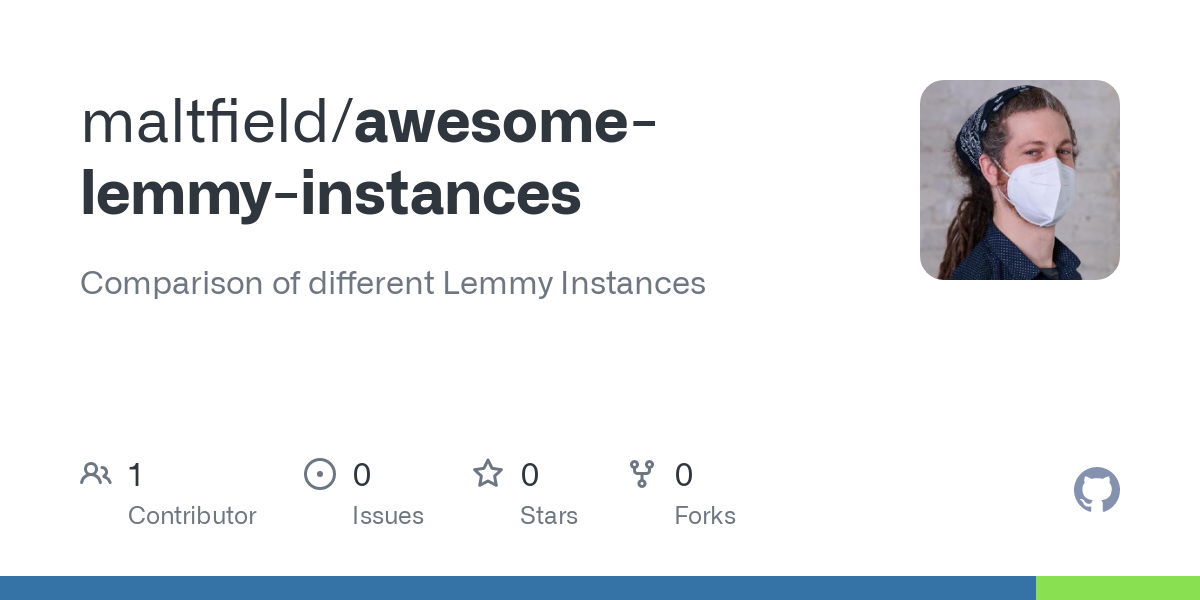- cross-posted to:
- [email protected]
- [email protected]
- [email protected]
- [email protected]
- cross-posted to:
- [email protected]
- [email protected]
- [email protected]
- [email protected]
I created a repo on GitHub that has a table comparing all the known lemmy instances
Why?
When I joined lemmy, I had to join a few different instances before I realized that:
- Some instances didn’t allow you to create new communities
- Some instances were setup with an
allowlistso that you couldn’t subscribe/participate with communities on (most) other instances - Some instances disabled important features like downvotes
- Some instances have profanity filters or don’t allow NSFW content
I couldn’t find an easy way to see how each instance was configured, so I used lemmy-stats-crawler and GitHub actions to discover all the Lemmy Instances, query their API, and dump the information into a data table for quick at-a-glance comparison.
I hope this helps others with a smooth migration to lemmy. Enjoy :)



Took me a little while, too. The i18n stuff is all in the translations repo (which is why I needed to PR that one, too and first). You won’t find it anywhere in the active repo (I think this is a flaw, and the joinlemmy translation stuff at least should be in the same repo. But the idea makes sense to not repeat translations that show up in other projects)
On build-run, the translation process runs, which seems to “guess” any lines in non-english that it discovers. I didn’t dig too deeply, but it wasn’t immediately obvious how it knew to check English for the originals, only that English has no retranslation tool attached to it.
Ok, thanks. I see the i18n text changes were here:
18n is probably good, but it does really make it harder for folks to collaborate. It totally stopped me from contributing. Thank you for your help <3
Yeah. It’s super-important to have, and nothing is simpler for what it does, but that doesn’t make it simple itself.
Of course, trying to translate in-flight with English HTML would be worse.